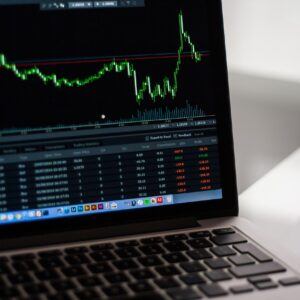On Tuesday (May 17), Sir Jon Cunliffe, Deputy Governor for Financial Stability at Bank of England (BoE), spoke about cryptoassets at the three-day event “The Future of Everything“, which is hosted by Wall Street Journal (WSJ).
According to his BoE bio, Sir Jon Cunliffe “became Deputy Governor for Financial Stability on 1 November 2013.” He is “a member of the Bank’s Financial Policy and Monetary Policy Committees, the Bank’s Court of Directors and the Prudential Regulation Committee.”
He has “specific responsibility within the Bank for financial stability, for the supervision and oversight of financial market infrastructures and payment systems and for international” and is “a member of the G20 Financial Stability Board Steering Committee.” Also, he is Chair of the Bank for International Settlements Committee on Payments and Market Infrastructures.
Per a Bloomberg report about Sir Jon’s speech, he said:
“There’s a long tail of retail investors who have invested in cryptoassets… Do they all understand what they’ve invested in? I think not. For that long tail of retail investors, I’m not sure they do understand. They don’t really see this as a financial investment.“
Here are a few other highlights from his speech:
- “There’s no intrinsic value around crypto assets. They move with sentiment. They’re being moved mainly as a risky asset, and prices have been going down pretty consistently.“
- “If you have that as a proportion of your portfolio, you have to realize it is highly speculative. You could lose all your money. You could make a sizable capital gain. It’s important for investors to understand the characteristics of this investment.“
In October 201, during a speech — on the risks of cryptoassets to financial stability — given at the Sibos 2021 conference, Sir Jon said:
“When something in the financial system is growing very fast, and growing in largely unregulated space, financial stability authorities have to sit up and take notice. They have to think very carefully about what could happen and whether they, or other regulatory authorities, need to act.
“At the same time, they need to be careful not to over-react – particularly when faced with the unfamiliar. We should not classify new approaches as ‘dangerous’ simply because they are different. Innovation, technology and new players can tackle longstanding frictions and inefficiencies and reduce barriers to entry. Throughout history, they have been key to driving improvement and to increasing resilience in financial services.
“I will give you my conclusions at the outset. Crypto technologies offer a prospect of radical improvements in financial services. However, while the financial stability risks are still limited, their current applications are now a financial stability concern for a number of reasons.
“Cryptoassets are growing fast and there is rapid development of new applications for the technology. The bulk of these assets have no intrinsic value and are vulnerable to major price corrections. The crypto world is beginning to connect to the traditional financial system and we are seeing the emergence of leveraged players. And, crucially, this is happening in largely unregulated space.
“Financial stability risks currently are relatively limited but they could grow very rapidly if, as I expect, this area continues to develop and expand at pace. How large those risks could grow will depend in no small part on the nature and on the speed of the response by regulatory and supervisory authorities.“
He went on to say that there are two types of cryptoassets: unbacked cryptoasets (such as Bitcoin), the main use of which he claims is “for speculative investment”; and backed cryptoassets (aka stablecoins), and for this category, he says that “regulatory authorities will need to ensure that the standards that apply to current systemic payment systems apply equally effectively to any systemic or likely to be systemic payment system using stablecoins.”
He concluded his speech by saying that “crypto technology offers great opportunity”, but “it has to be a truly better mousetrap and not one that simply operates to lower standards – or to no standards at all.”
To make sure you receive a FREE weekly newsletter that features highlights from our most popular stories, click here.
Disclaimer
The views and opinions expressed by the author, or any people mentioned in this article, are for informational purposes only, and they do not constitute financial, investment, or other advice. Investing in or trading cryptoassets comes with a risk of financial loss.
Image Credit
Featured Image by “derwiki” via Pixabay.com









